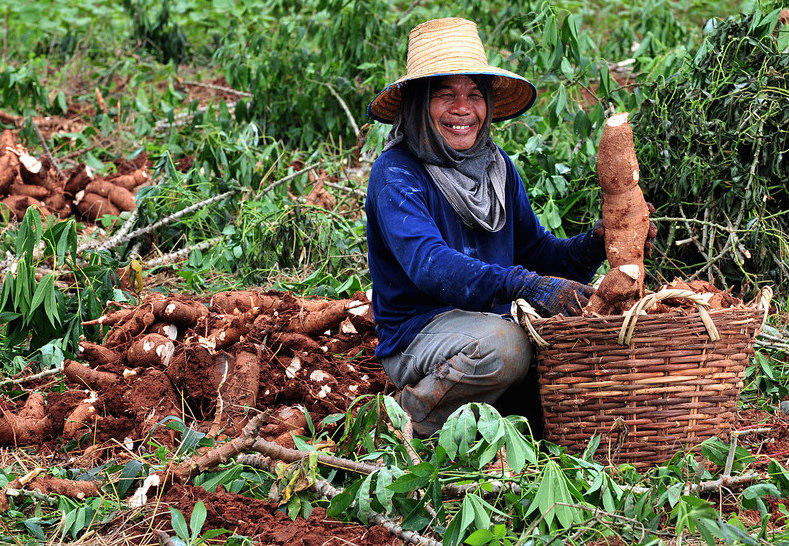Send to a friend
The details you provide on this page will not be used to send unsolicited email, and will not be sold to a 3rd party. See privacy policy.
[JAKARTA] Pests and disease outbreaks are threatening to decrease cassava production by 30-40 per cent this year in South-East Asia, home of the world’s largest cassava producers.
The pestilence will endanger the livelihood of 40 million people in the region, according to a recent study published in Pest Management Science.
“Cassava witches’ broom disease has spread substantially and is currently found at high infestation levels in western Thailand, central Vietnam, Cambodia and the Philippines.”
By Kris Wyckhuys of CIAT
Together with Brazil and Nigeria, South-East Asian countries Indonesia and Thailand supply the international market with millions of tonnes of this starch-producing crop that is used to make various commodities from food products to paper to biofuel.
In recent years, the invasion of the mealybugs and the insect-vectored witches’ broom disease have cut cassava yields in South-East Asia. In Thailand, the mealybugs have infected 200,000 hectares of cassava plantations, resulting in 30-50 per cent yield loss.
In Indonesia, the mealybugs have infected areas in Java and southern Sumatra and are now heading to the eastern part of Indonesia, where cassava is a primary food source, says Aunu Rauf, senior entomologist at the plant pest and diseases department of the Institut Pertanian Bogor in Indonesia,
According to Rauf, the mealybugs have decreased cassava production in West Java to 30-40 per cent, and if the same case happens to other places in Indonesia, the losses will reach 9.6 million tonnes per year. Indonesia’s annual cassava production is 24 million tonnes, grown in 1.1 million hectares of cassava plantations across the archipelago.
The invaders, which originated from South America, are a serious threat for cassava agriculture in South-East Asia because of their rapid spread throughout the region in just a matter of years, says Kris Wyckhuys, the co-author of the study who is an entomologist at the nonprofit International Center for Tropical Agriculture (CIAT).
“Cassava witches’ broom disease has spread substantially and is currently found at high infestation levels in western Thailand, central Vietnam, Cambodia and the Philippines. The mealybugs have affected about 70 per cent of Asia’s cassava fields. This fact exemplifies how successful they are as invaders,” he notes.
Wyckhuys warns that climate change could exacerbate the invasion in various ways. Climate extremes such as extended drought periods can benefit the mealybugs because the insects build up their population in the absence of rainfall. Drought can also cause stress on host plants and make them more susceptible to pests and diseases.
To alleviate the problem, Wyckhuys says, “Work is needed on a surveillance and monitoring angle, forecasting and early warning front, as well as on developing adult education tools to train South-East Asia's cassava farmers to deal with these threats.”
Wykchuys also suggests improvements in pest management as well as introducing biological control from the invader’s origin.
In Indonesia, Rauf says they have been collaborating with CIAT and FAO as well as Indonesia’s Ministry of Agricultural Affairs in introducing into infected areas a parasitic wasp called Anagyrus lopezi, which is the natural enemy of the mealybugs. It is hoped this biological control agent will successfully thwart the invasive pests.
This piece was produced by SciDev.Net’s South-East Asia & Pacific desk.
References
Ignazio Graziosi and others Emerging pests and diseases of South-East Asian cassava: A comprehensive evaluation of geographic priorities, management options and research needs (Pest Management Science, 24 March 2016)














